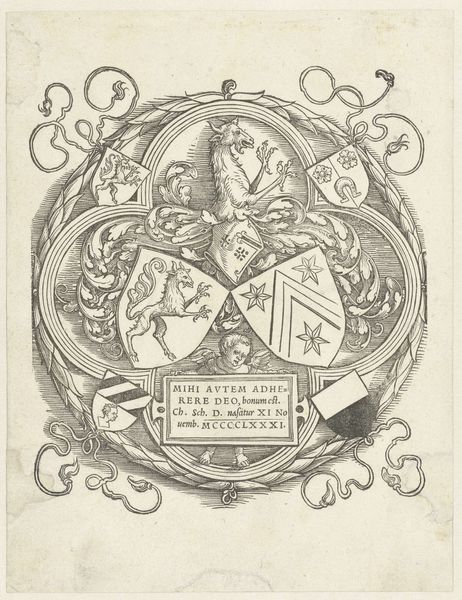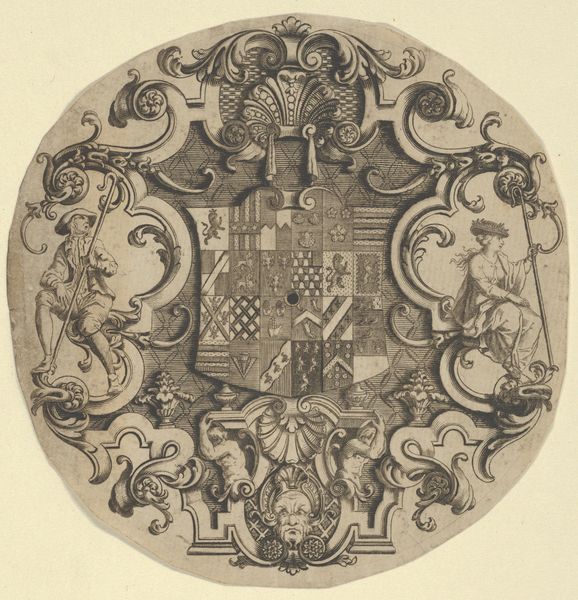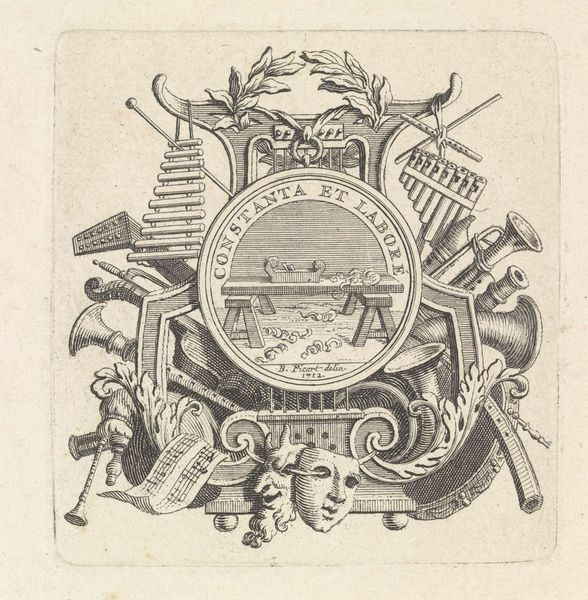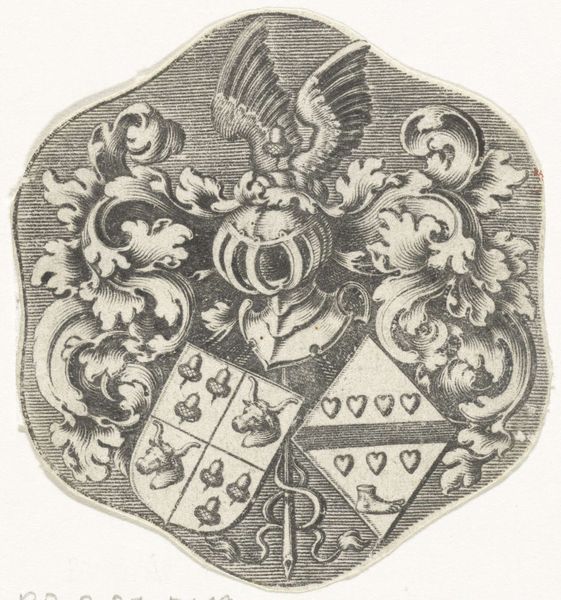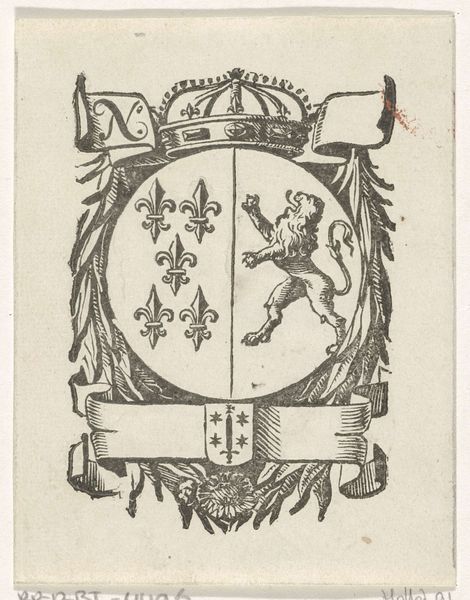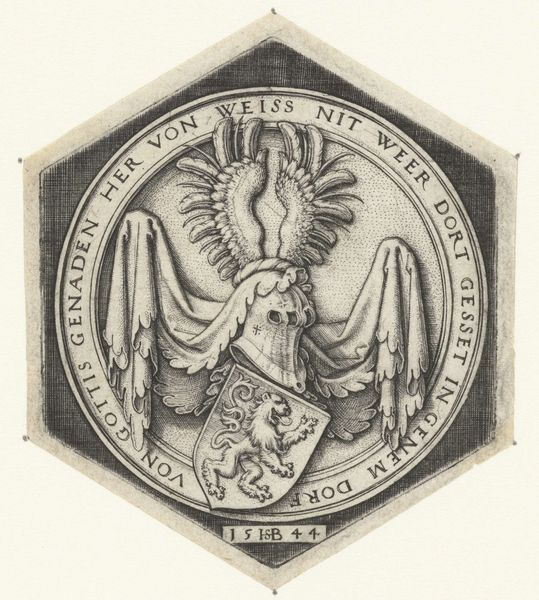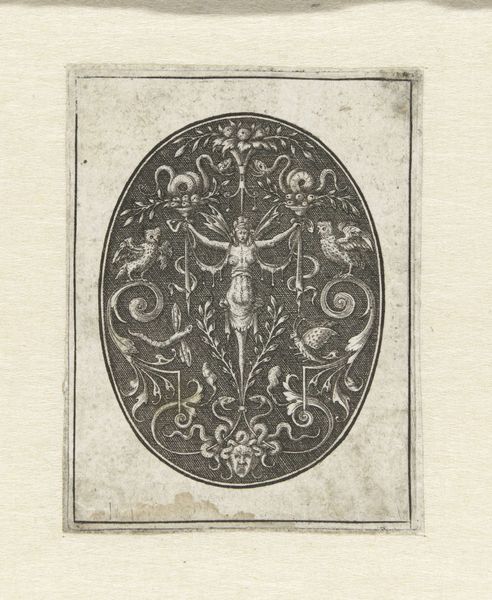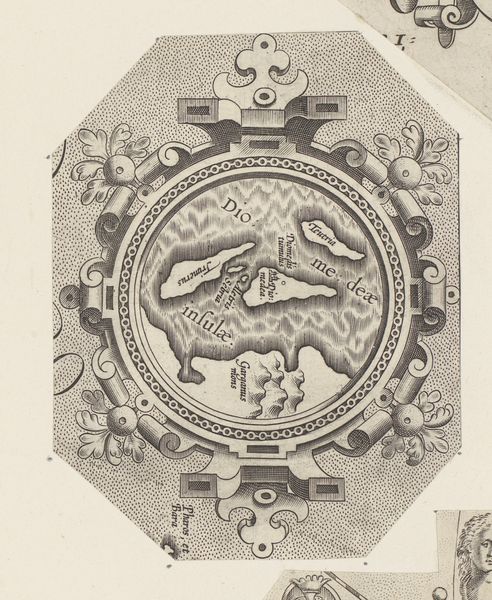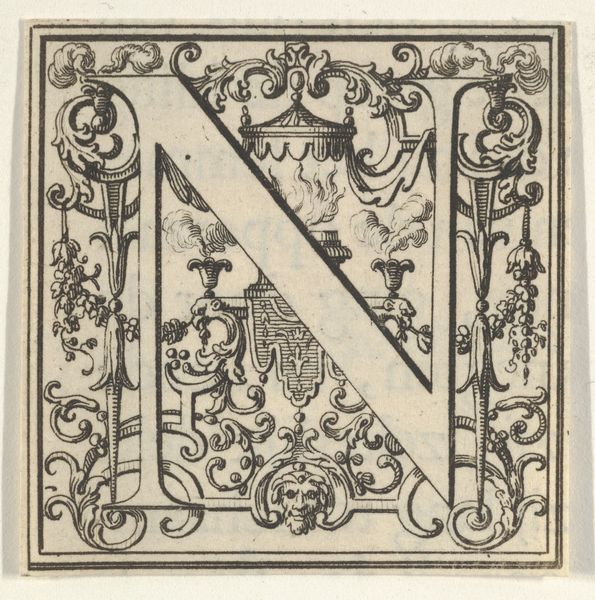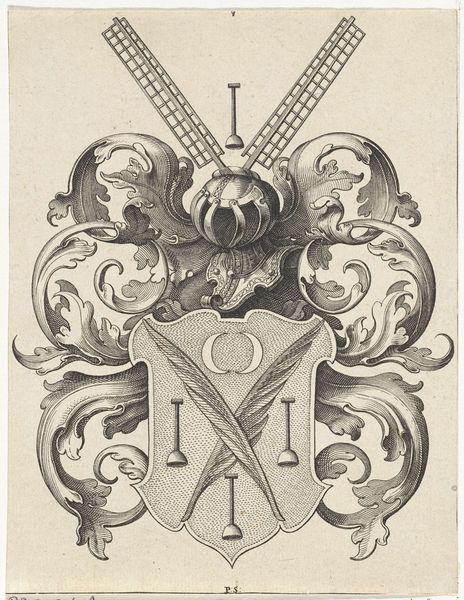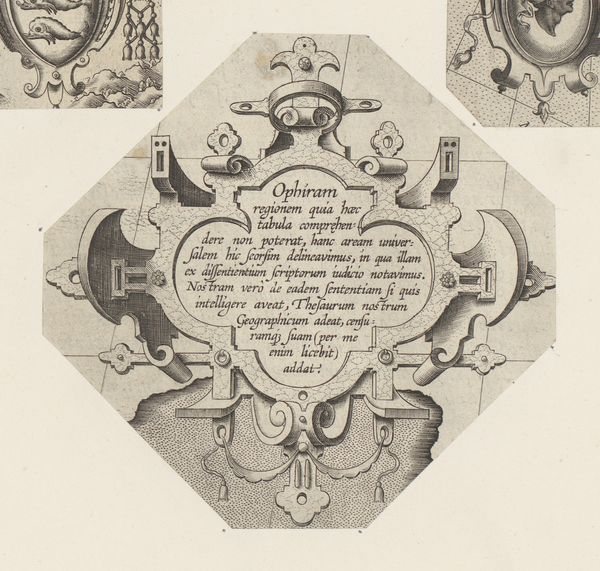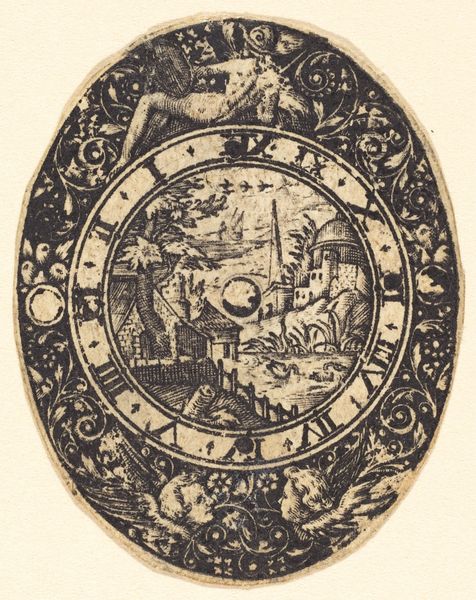
graphic-art, print, engraving
#
graphic-art
#
allegory
# print
#
old engraving style
#
line
#
history-painting
#
decorative-art
#
engraving
#
miniature
Copyright: Rijks Museum: Open Domain
Editor: This is the “Ex libris van Carl Franz Georg Richard Schwerdt,” dating from 1882 to 1939, currently held at the Rijksmuseum. It’s a fascinating engraving, quite intricate and decorative. What strikes me most is how detailed these miniature scenes are within the larger circular frame. What do you make of it? Curator: Immediately, I’m drawn to consider the means of production here. Engraving, particularly with this level of detail, was incredibly labor-intensive. It’s fascinating how a practical object – a bookplate, indicating ownership – becomes a site for complex imagery and high artistry. Do you see how the scenes depicted are likely allegorical references, hinting at the owner's social standing, tastes, and historical interests? Editor: Yes, I noticed the historical scenes, almost like little history paintings, but contained within this very refined, decorative context. Does the contrast between the labour involved in the engraving and the function of a bookplate tell us something? Curator: Precisely. The labor embedded within this object speaks volumes. Consider the time and skill involved in creating this tiny world, a world readily consumed and displayed as a marker of erudition and privilege. This highlights the inherent tension between "high" art and craft. It challenges traditional boundaries. What impact do you believe this intricate production would have had on contemporary understandings of art's value? Editor: It is fascinating to think about. It certainly underscores the exclusivity of art ownership at the time. Curator: Absolutely. It also makes you consider how mass production techniques might devalue and democratize similar objects and, in turn, affect the reception and meaning we attach to handmade or artisan works. We're left grappling with questions of labor, value, and accessibility, which persist to this day.
Comments
No comments
Be the first to comment and join the conversation on the ultimate creative platform.

